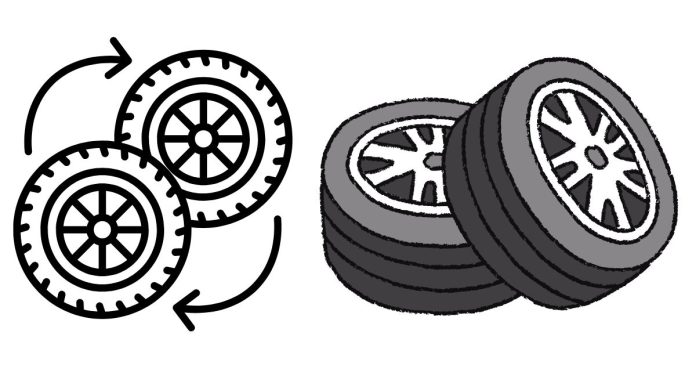Proper tire maintenance is essential for your vehicle’s performance, safety, and longevity. One key aspect of tire care is tire rotation, but how often should you be rotating your tires to ensure they wear evenly and last as long as possible?
What is Tire Rotation?
Tire rotation is the process of moving each tire from one position to another on your vehicle. This helps ensure that the tires wear evenly, as different positions on the vehicle (front, back, left, right) can cause tires to wear at different rates due to factors like weight distribution and driving patterns.
How Often Should You Rotate Your Tires?
In general, it’s recommended to rotate your tires every 6,000 to 8,000 miles (or approximately every 6 months). However, the exact interval can depend on a few factors:
- Manufacturer’s Recommendations: Always refer to your vehicle’s owner’s manual for the manufacturer’s suggested interval. Some vehicles may require more frequent rotations, while others may be less frequent.
- Driving Conditions: If you drive on rough roads, take long trips, or frequently drive in harsh conditions, you may need to rotate your tires more often. On the other hand, if you mostly drive on smooth, paved roads, your tires might wear more evenly and need fewer rotations.
- Tire Type: Different types of tires (e.g., all-season, performance, or off-road) may have different rotation requirements. It’s important to consider your tire type when determining how often to rotate.
Why Is Tire Rotation Important?
Regular tire rotation offers several benefits:
- Even Wear: Since your tires are constantly in motion and subjected to different forces, they naturally wear unevenly. Rotating them helps distribute this wear, which prolongs the life of each tire.
- Improved Safety: Uneven tire wear can affect the handling of your vehicle, especially in wet or slippery conditions. Tire rotation ensures that all tires provide consistent grip, contributing to better stability and safety.
- Better Fuel Efficiency: Tires with uneven wear can cause drag and reduce fuel efficiency. By keeping your tires in good condition with regular rotations, your vehicle can maintain optimal gas mileage.
- Smoother Ride: When your tires wear evenly, your ride will feel smoother, reducing vibrations and improving overall comfort.
Signs You Need a Tire Rotation
Even if it’s not time for a scheduled rotation, keep an eye out for signs that your tires may need a little attention:
- Uneven Tire Wear: If you notice more wear on one tire compared to others, it may be time to rotate.
- Vibrations: If your car starts to feel off balance, with vibrations or pulling to one side, it could be due to uneven tire wear.
- Noisy Ride: A sudden increase in road noise or uneven tire contact with the pavement could be another indicator that it’s time to rotate your tires.
Conclusion
Getting your tires rotated regularly is a simple but important maintenance task that can help you avoid costly repairs, improve your safety on the road, and extend the life of your tires. Aim to rotate your tires every 6,000 to 8,000 miles, but always check your vehicle’s manual for specific guidance. By staying on top of this routine, you’ll ensure that your car stays running smoothly for years to come


